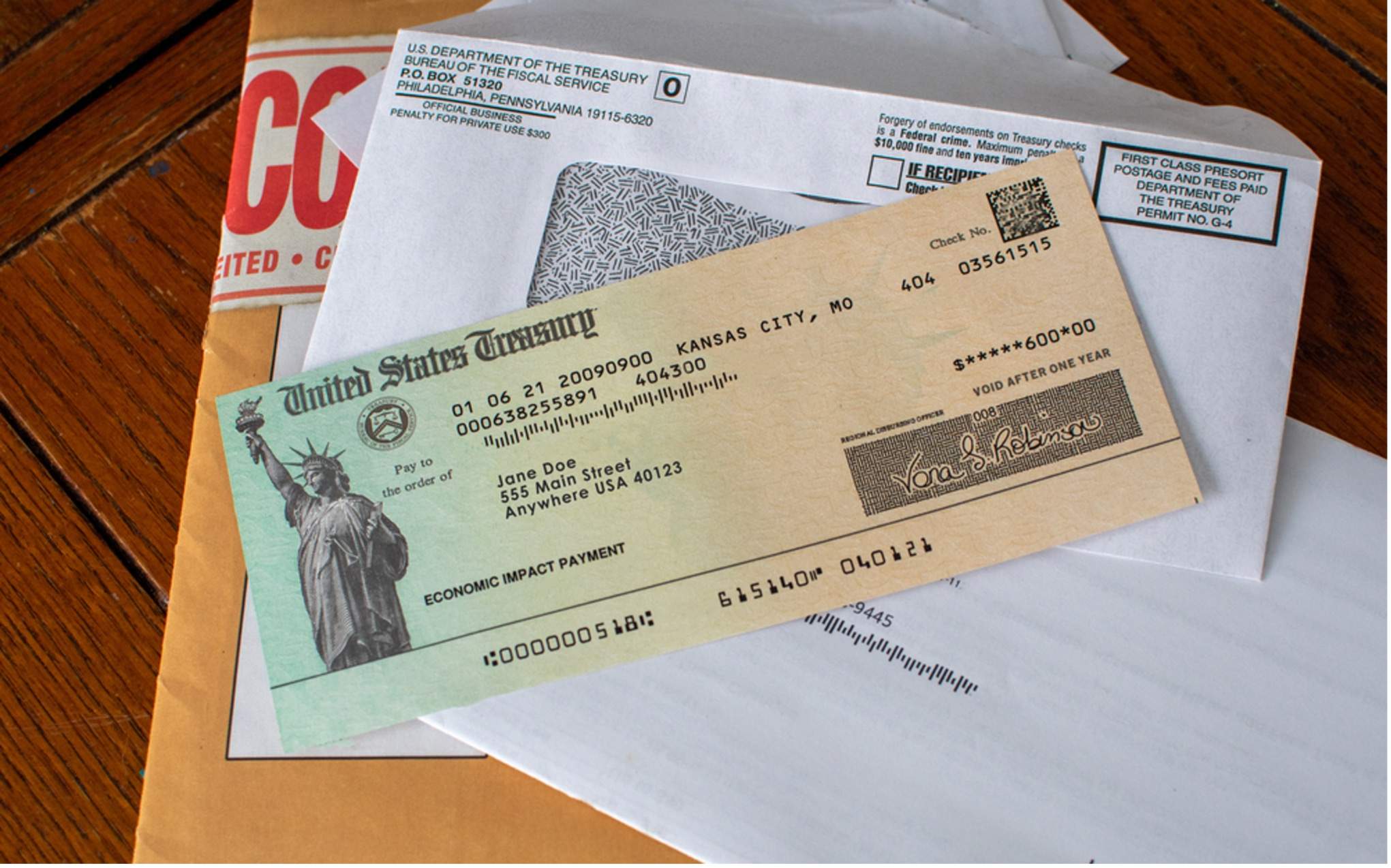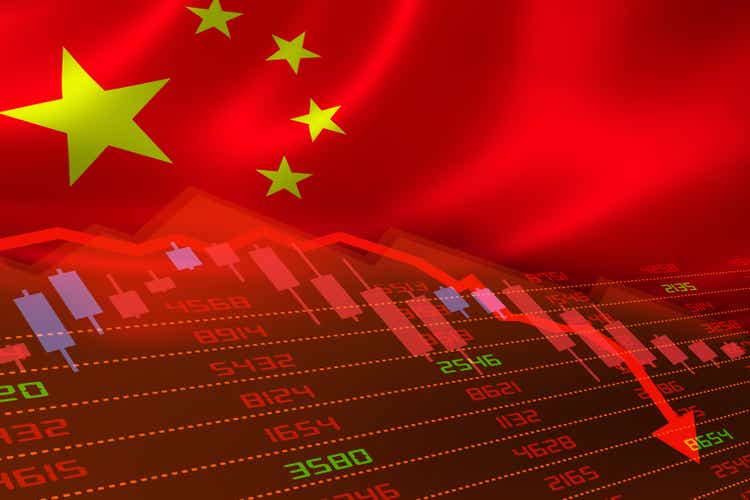Last week, I ventured out to Denver, Colorado, for the annual ETHDenver conference.
This is the largest gathering of Ethereum developers, entrepreneurs, investors and enthusiasts in North America, if not the world.
Crypto is in the middle of a multiyear bear market, but you wouldn’t have guessed it from the 20,000 attendees at this year’s main event.
One morning on my way to the event, I struck up a conversation with my Uber driver. He was not happy about crypto.
He got burned going “all-in” at the height of the mania. He told me how much he lost (which I won’t repeat) and said he hoped crypto “dies in the ashes.” I was a little worried he would leave me on the side of the highway.
This is a common theme among many investors. We think massive societal shifts will happen overnight and we place our bets accordingly.
I made a huge mistake going all-in on electric vehicles years before Tesla reached commercial success. (I was correct on the revolution — I just bet too much on the wrong horse.)
You see, revolutions are never clean. They’re messy.
Incumbents don’t like losing power. There are fortunes to be made in a technological uprising, but the path is full of peaks and pitfalls.
These revolutions start slowly, and then they take over suddenly…
The automobile did not replace the horse and buggy overnight. There were also 253 automobile companies in 1908!
It took decades for the internet to become an indispensable part of our daily life. Hundreds, if not thousands, of dot-coms have gone bankrupt along the way. Naysayers told you how expensive Amazon and Google were the entire ride up.
Even the path to our green energy future has been filled with booms and busts. Yet, the International Energy Agency still forecasts that 66% of our energy will come from renewables by 2050.
Crypto will be no different. We’ve already witnessed more volatility in the past few years than any other asset class in history. We’ve seen 100X moves followed by 95% declines.
That’s why you must do whatever possible to stay in the game.
ALWAYS keep your speculative positions below 10% of your portfolio. And if you’re a retiree, needing the funds in the next few years, this number should be even lower.
Because what I saw at ETHDenver reinforces my strong belief…
A digital revolution is upon us.
Everywhere I looked, a team was building a solution to the coming crypto economy…
Where our digital identity belongs to us, tech overlords no longer control our data and centralized middlemen are replaced with autonomous networks.
And there’s no bigger crypto to take advantage of this development than the one whose name was on the door…
Ethereum!
The Building Blocks of Crypto
If you’re a reader of Strategic Fortunes or Next Wave Crypto Fortunes, you already know my favorite crypto is Ethereum.
Ethereum, unlike bitcoin, has an entirely separate use case apart from being an alternative currency.
You see, Ethereum is the building block of crypto.
Think of it as a Lego set. You can use Ethereum to build new types of digital infrastructure.
This could be anything from smart contracts that automatically pay insurance claims, to online gambling markets which autopay the winner, to decentralized finance which automatically settles expired option positions.
But that’s just the tip of the iceberg when it comes to Ethereum’s potential. Many types of modern-day digital resources can be provisioned and built on Ethereum’s blockchain layer.
I’m talking about:
- Cloud storage.
- Network bandwidth.
- Computational power.
That’s why I like to say that Ethereum, not bitcoin, will someday be the world’s largest cryptocurrency. Because it’s potential? Well, it’s revolutionary, to say the least.
Bitcoin changed the way we send something of digital value.
But Ethereum? It’s going to change how we interact online. Period.
It all comes down to one mega trend: Web3.
How Ethereum and Web3 Are Set to Revolutionize the World
Right now, we all use Web2. This is the internet that powers our iPhone apps, our social media platforms and on and on.
Web3, however, is going to take all these digital domains and rebuild them on blockchains. Similar to how Ethereum builds decentralized apps (or “dapps”) with its Layer 1s.
Once we move into Web3, everything is going to change.
You can say goodbye to the days of Big Data harvesting your personal information to sell you even more goods you don’t need.
With Web3, ownership is put firmly back in users’ hands.
Gavin Wood, one of the founders of Ethereum, put it like this:
[Web3 is a] reimagination of the sorts of things we already use the web for, but with a fundamentally different model for the interactions between parties. […] Information that we assume to be public, we publish. Information that we assume to be agreed, we place on a consensus ledger. Information that we assume to be private, we keep secret and never reveal.
As a result, Web3 is going to disrupt several areas of the economy — everything from real estate to health care to supply chains.
Here’s a look at Web3 at work:
- Decentralized property registries — proof of ownership of real-world items like houses and cars. Blockchain can substitute the databases kept by the local property registry and the Department of Motor Vehicles.
- Decentralized Internet of Things transactions — devices can securely communicate and transact without an intermediary, leading to massive changes in transportation and energy.
- Decentralized content — musicians and artists would no longer rely on platforms such as Spotify and YouTube to monetize their digital content. They would be able to track and manage it as a digital asset.
- Decentralized finance — centralized exchanges would be replaced by smart contracts (which run on blockchain), and banks replaced by immutable vaults. Plus, algorithms would do away with your local mortgage broker.
Naturally, Ethereum is going to play a big part in this disruption.
The thing is, Ethereum is a new general-purpose technology. Think of it as a new electricity … or, simply, a new internet.
Could you imagine somehow owning shares of “electricity” when Edison invented the lightbulb in 1879?
Or owning shares of “the internet” years before it took over our lives?
Ethereum, like these other milestone technologies, is set to become a huge technological revolution in the same way.
Here’s how I’m playing it…
Here’s How to Play the Ethereum Revolution
I commit a portion of my portfolio to Ethereum — not a lot because it’s very volatile — and I also add a little bit to it every month.
This is something that I’m not selling. I probably will leave it to my children and tell them not to sell. They may leave it to their children’s children. And by the time it gets to them, their position will be much bigger.
See, with Ethereum, you have the option to start collecting a dividend every year.
If you own the token, you can stake it in the network. Then you can accrue fees that people pay in order to use and power these smart contracts.
Institutions have not caught on to this yet.
Institutional ownership of Ethereum and bitcoin is very low compared to retail, but they are coming. And that’s thanks to regulations. The SEC, in particular, is looking to crack down on unregistered securities this year, making sure crypto companies hit certain standards. Once that happens, there’s not much left to keep institutions from entering the market in a big way.
If you gave me the choice of one asset to buy and hold for the next couple decades, it would be Ethereum.
I would never sell it. And even if the price goes down 50% or 70%, I would still hold. (Maybe even add more!)
Because I’m all but certain that crypto is going to be a truly transformative technology.
And we’re already seeing that play out. Even the banks are worried about it, which is why JPMorgan and Goldman Sachs have their own crypto divisions. It’s also why Fidelity created their own custody solution, Fidelity Digital. And BlackRock partnered with Coinbase.
This is coming, whether the naysayers like it or not. The price has been down obviously over the last year.
But, as I told you a few weeks ago, I have good reason to believe crypto has bottomed and we’re about to enter a new bull market.
Still, if you’re not ready to take the plunge and buy crypto itself, there are plenty of other ways to profit.
I believe Coinbase — up over 88% year to date — is going to be one of the major winners from this next bull cycle.

You see, a lot of its competition has been wiped out.
FTX, its main competitor in the U.S., is gone. Binance is seeing a lot more regulations here in the U.S. Gemini, another exchange, got in trouble with their lending platform.
Not only that, Coinbase recently launched a Layer 2 blockchain called Base. This will allow developers to build new decentralized applications (“dapps”) which can be used by Coinbase’s estimated 110 million verified users.
The company is now leading the way to bring new users “on-chain”. As a result, I believe we are going to see Coinbase emerge from this crypto winter as the clear winner in the exchange space.
So, if you’d like a pick-and-shovel play on crypto, Coinbase is one option.
The simplest method, however, is to just own Ethereum and bitcoin, which I highly advise people to do. It’s as simple as opening a Coinbase account and following the instructions.
Overall, though, keep position sizes small. Cryptos are historically volatile, and Coinbase, despite being a more traditional business, is exposed to that volatility. Never invest more than you’re willing to lose, and always keep it as a smaller portion of your overall portfolio.
Regards, Ian KingEditor, Strategic Fortunes
Ian KingEditor, Strategic Fortunes
P.S. If you’d prefer to have a guide on your side as you venture into crypto, you have to check out my premium research advisory Next Wave Crypto Fortunes.
I just issued a brand-new report there with three coins I see poised to deliver 10X over the next year.
For the full details, just click here.
P.P.S. I have exciting news!
We’re getting the gang back together to launch Market Insights to our premium subscribers this month. We’ll have the same videos you know us for, plus some new features we know you’re going to love. Stay tuned!
Disclaimer: We will not track any stocks mentioned in The Banyan Edge. We are just sharing our opinions, not advice. If you want access to the stocks in our model portfolio with tracking, updates and buy/sell guidance, please check out Strategic Fortunes.

That headline sounds a lot like a tragic middle school romance. And, alas, as the father of a middle schooler, I’ve heard enough similar-sounding drama in the past week alone to make me personally want to throw myself off the Miraflores cliffs into the choppy waves of the Pacific Ocean.
But no, I assure you that this isn’t middle school romance we’re talking about.
Jay refers to Federal Reserve Chair Jerome “Jay” Powell, and TINA is an acronym we unfortunately had to live with for most of the past two decades: “There is no alternative.”
When interest rates were pegged at zero — and long-term bond yields not much higher — the stock market was the only game in town, at least for your liquid assets.
There was nowhere else to go. There was no alternative. And as a result, stock prices got nutty.
In the years leading up to 2022, we saw a classic stock market bubble. But you can’t really argue that investors “irrationally” bid up prices.
With interest rates at zero, they were acting completely rationally. Better to roll the dice on a stock trade and maybe make money than leave it in cash or bonds and definitely lose money, at least after taking inflation into account.
Well, after a year of aggressive rate hikes, TINA is dead. We now have TARA: “There are reasonable alternatives.”
The Wall Street Journal listed a few other acronyms making the rounds. They get progressively sillier.
There is TAPAS, if you prefer a Mediterranean Spanish flair: “There are plenty of alternatives.” Or even TIARA: “There is a realistic alternative.”
Of course, the primary alternative that all of these acronyms point to is good ol’ fashioned T-bills.
U.S. government securities with six to nine months to maturity now yield about 5%. That’s a risk-free 5%.
It’s the U.S. government, so real default isn’t possible. The Treasury can always simply print the money it needs to pay back the bonds, debt ceiling theatrics notwithstanding.
And with such a short time to maturity, you don’t really have to worry about interest rate risk either.
I’m not going to recommend you dump all of your money into T-bills. Though frankly, I do believe that it makes sense to dump virtually all of your excess cash into them. If you are reasonably sure you won’t need the money for at least six months, why not earn interest on it?
The bigger picture here is the alternatives. If you’re going to play the stock market, you have to be reasonably sure that your investment will do vastly better than the 5% on offer in Treasurys. If you can’t say that, then perhaps that’s a trade you should pass on.
Again, I’m not suggesting you shouldn’t invest in stocks. You should invest.
But given that there are true alternatives today, you need to be more selective. Be willing to save your precious capital for only the trades you have the most confidence in.
And about that…
Ian King’s highest-conviction trend at the moment is the reshoring boom and the one sector that’s seeing a huge tailwind because of it.
Uncle Sam has fired China and is bringing high-tech manufacturing back home. Fortunes will be made by investing in the companies making that possible.
Ian’s got all the details right here, but be aware that today’s your last day to hear them for the foreseeable future. Act by midnight ET tonight to make sure you get your hands on Ian’s latest research.
Regards, Charles SizemoreChief Editor, The Banyan Edge
Charles SizemoreChief Editor, The Banyan Edge
















